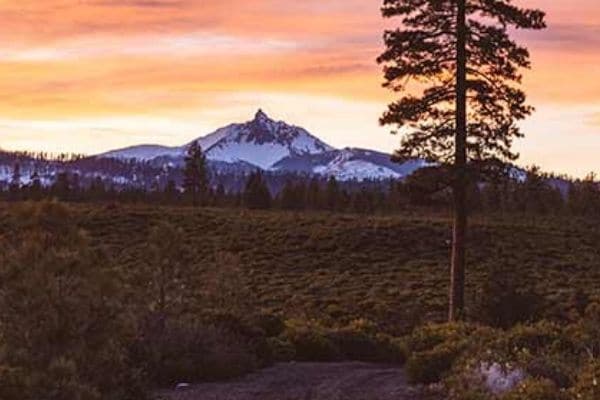This article was published on: 02/15/22 8:34 AM
By Ron Thorkildon
Early last fall seasonal forecasters were eyeing changes taking place in the tropical Pacific Ocean. Sea surface temperatures there were trending lower, a sign that the El Niño Southern Oscillation (ENSO) was likely transitioning to its cool phase, paving the way for the second appearance of La Niña in as many years. Sure enough, in October she arrived for a repeat engagement to once again orchestrate global weather patterns.
When La Niña is on her game, winters in the Pacific Northwest tend to be cooler and wetter than normal. In 2020-21 she didn’t get her act together soon enough to produce much precipitation here in Central Oregon until mid-January 2021. By then it was a game of catch-up for the remainder of the winter. Bend was exceedingly dry in December 2020, also in January and March of 2021. Normal rain/snowfall in February did add to the Central Oregon Cascade snowpack, but by April it was still only 70 to 80 percent of normal.
This season began differently. During November, an active jet stream carried a series of fronts into southern British Columbia, Washington, and western Oregon, fueling optimism that this winter might indeed be a soaker. In fact, a couple of atmospheric river episodes took dead aim on northwestern Washington, causing widespread flooding and several landslides. An atmospheric river is a narrow region in the atmosphere that transports large amounts of water vapor
from the subtropics to the temperate zones at higher latitudes.
Bellingham on the northern Washington coast received three times its normal rainfall in November, while Quillayute on the Olympic peninsula had nearly doubled its norm. Precipitation levels at Portland, Eugene, and Bend were nearly normal. However, because of the high freezing levels associated with these events, very little snow fell in the Cascades, especially in Oregon.
In early December, the weather pattern began to change as a ridge aloft began to build in the eastern Pacific Ocean. One-third of the way into the month cooler systems began approaching from the Gulf of Alaska. This time, greater than normal precipitation fell at stations in Oregon — except in Central Oregon. By December 22, the offshore blocking ridge strengthened and amplified, opening the door to colder air from the north. On Christmas Eve modified arctic air streamed into the Northwest from Canada. Temperatures remained cold for the remainder of the month as several feet of snow were deposited in the Cascades. Some areas near Sisters received a foot and a half of snowfall.
Another sign that we’re headed for a cold, snowy winter, and that La Niña is doing her job, right? Not so fast.
Remember that bubble of warm, dry air off the coast whose clockwise circulation ushered in the cold air in December? Instead of holding fast or disappearing and allowing the jet stream to send additional storms our way (more normal during a La Niña season), it maintained its identity and in early January shifted eastward to take up residence along the west coast. And there it still sits. As long as this high-pressure ridge remains in place, we will stay warm and dry.
On January 1, 2022, the water equivalent of the snowpack in the Washington Cascades ranged from 132 to 90 percent of normal. In Central Oregon the figure was 104 percent of normal. On February 12, the snowpack in Washington had been reduced to 100 and 75 percent of normal. In Central Oregon it dropped to 90 percent of normal.
There is still enough time to salvage a respectable winter season. The Oceanic Niño Index confirms that La Niña is still here. She just needs to focus.
Forecasting models that extrapolate two weeks into the future do indicate that the pesky ridge may break down, allowing for a more west-to-east-oriented jet stream to develop that would carry Pacific storms our way.
For the three-month period February through April 2022, the Climate Prediction Center foresees below normal temperatures and above normal precipitation in our area.




